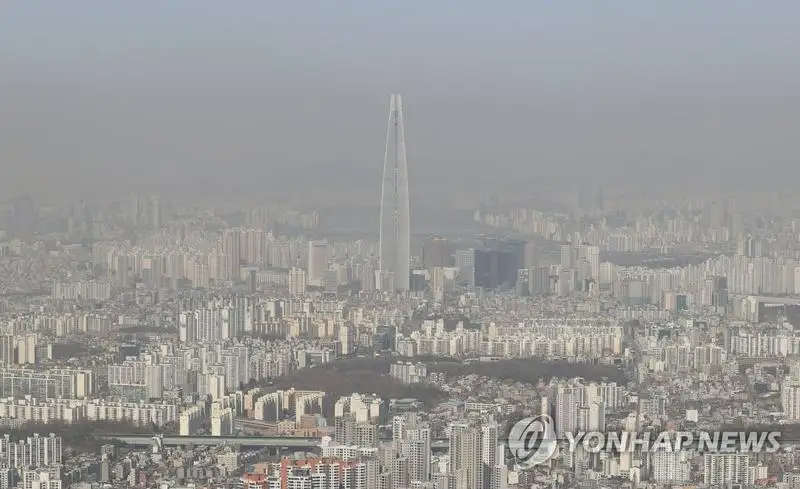Yellow dust blankets S. Korea for 2nd day, emissions reduction measures enforced

Hit by the powerful dust storm from the island deserts in northern China and Mongolia, South Korea issued yellow dust warnings for almost all parts of the country for the first time in a decade on Monday.
According to weather authorities, the density of fine dust particles smaller than 10 micrometers in diameter, known as PM 10, peaked as high as 973 micrograms per cubic meter in Gunsan as of 1 a.m. Tuesday.

Authorities here categorize concentrations of PM 10 between zero and 30 micrograms as «good,» between 31 and 80 as «normal,» between 81 and 150 as «bad» and more than 151 as «very bad.»
Other regions across the country were also affected by the yellow dust, with yellow dust warnings in South Chungcheong Province, the Jeolla region, Jeju Island, Ulleung Island and Dokdo remaining in place as of 9 a.m.
Yellow dust warnings in Seoul and its nearby areas, the southerns part of Gangwon Province, North Chungcheong Province, Daejeon and Sejong, however, have been lifted thanks to marked decreases in yellow dust concentration levels.
The National Institute of Environmental Research forecast fine dust in Incheon, part of Gyeonggi Province, the provinces of Chungcheong, Jeolla, Gyeongsang and Jeju to remain in the «very bad» levels throughout the day.
Apparently concerned for their health safety, some workers commuting to work in the morning were spotted covering their faces with double masks, while others were seen waiting for buses not at outdoor stations on the streets but inside nearby buildings.
One convenience store owner in Daejeon, 164 kilometers south of Seoul, said he took from home some saline water to cleanse his eyes, as the extreme amount of dust caused irritation. «The store windows have to be constantly cleaned of the dust,» the store owner added.
Emergency emissions reduction measures have been put in place in Busan, Gwangju, South Chungcheong Province, South and North Jeolla provinces, South Gyeongsang Province and Jeju Island.
Vehicles that are categorized as Grade 5 in terms of emission have been prohibited from use in the regions, and 18 coal power plants have also been suspended.


